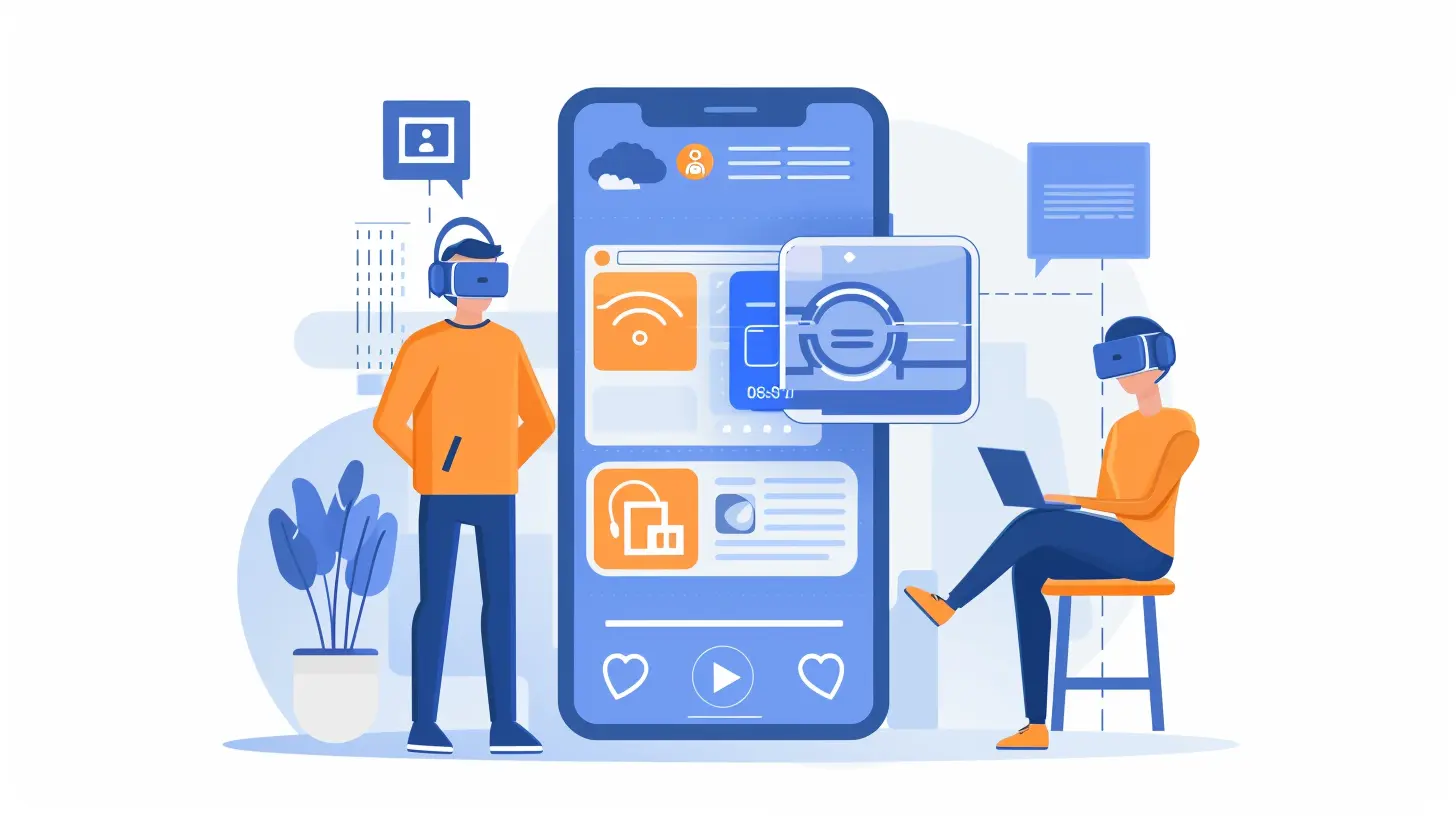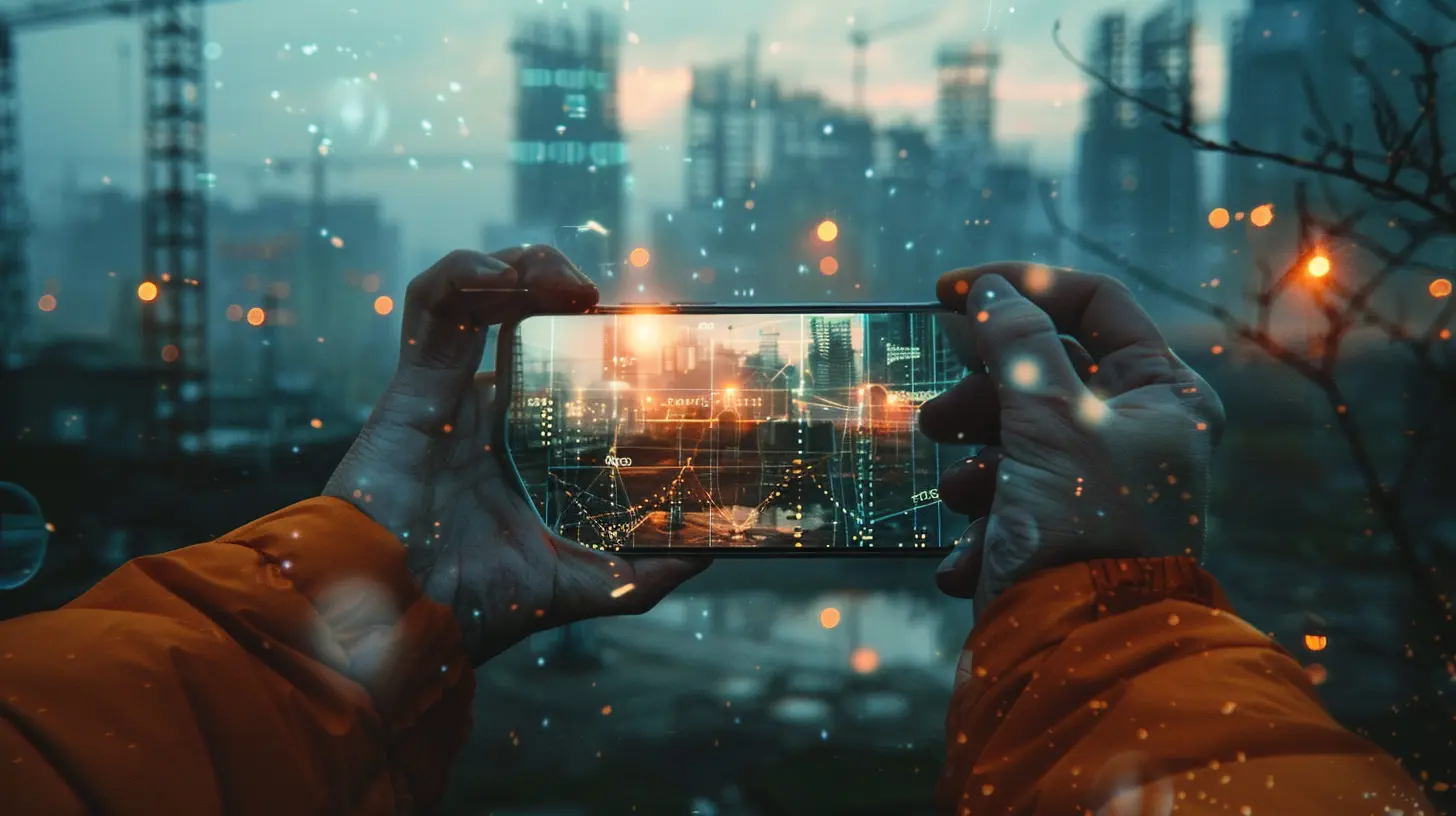How Augmented Reality is Bridging the Gap in Remote Collaborations
13 June 2025
Let's be real for a second. Remote work is no longer a luxury or rare perk — it’s become the norm. Whether you're working from home, across the country, or even halfway around the world, one challenge still persists: how do we maintain effective collaboration when we're not in the same room?
Enter Augmented Reality (AR). It’s not just for gamers or sci-fi movies anymore. AR is rapidly emerging as a game-changer for virtual teamwork. This powerful technology is flipping the script on how we brainstorm, build, and bond — even when we're miles (or continents) apart.
In this article, we're diving deep into how AR is helping close those frustrating gaps in remote collaboration. If you’ve ever been on a video call, waving your hands in the air trying to explain an idea, you’re going to want to keep reading.
The Old Way Is Broken: Why Remote Collaboration Needs a Makeover
Let’s face it, Zoom fatigue is real. Sure, video meetings help, but communication still falls flat sometimes. Body language doesn’t land. Creative energy fizzles. Technical walkthroughs become long-winded messes. And let’s not even talk about trying to train someone remotely — it's like teaching someone to dance over the phone. Not ideal.Traditional collaboration tools offer convenience, but they’re lacking one vital piece: presence. That's where AR steps in, giving everyone a sense of being there — even when they're not.
What is Augmented Reality, Really?
Before we dive into the "how," let’s clear up the "what."Augmented Reality enhances your environment with digital overlays. Imagine looking through your phone or AR glasses and seeing a 3D model of your product floating in your living room. It’s not replacing the real world like Virtual Reality (VR), but enriching it.
Think of AR as adding a digital layer on top of reality — kind of like putting on a pair of smart glasses that show extra information, models, or even people right in your actual space.
AR Brings People Closer — Virtually
Here’s the magic: AR bridges the physical and digital worlds. It gives remote teams the ability to share a space, even if they’re thousands of miles apart. Let me paint a picture for you.Imagine working in product design. Instead of sending static pictures or clunky 3D files back and forth, you and your teammate both “look” at the same 3D model in your rooms. You can point, walk around it, highlight issues in real-time — just like you would in a physical office.
You’re not just talking — you’re doing... together.
Industries That Are Already Jumping In
AR isn’t just some future tech; it’s already rolling out across industries. Here's a quick look at who’s leading the charge:🔧 Manufacturing & Engineering
Technicians can now receive real-time, hands-on guidance from remote experts through AR headsets. Instead of deciphering written manuals, they see step-by-step instructions overlaid right on the machinery they’re working on.🏥 Healthcare
Doctors and medical students can collaborate in AR environments for diagnostics, surgeries, and training. It’s like having a specialist right there with you, guiding your every move — even if they’re actually in another country.🎨 Design & Architecture
AR allows teams to co-create 3D prototypes in real-time. Whether it’s a building layout or a new product model, designers can interact with objects as if they were standing in a shared physical studio.🛍️ Retail & Marketing
Collaborating on store layouts or campaign strategies becomes more tactile with AR. Remote teams can virtually ‘walk through’ stores and assess shelf placements or promotional displays.Real Talk: How AR Actually Improves Remote Collaboration
Still wondering what makes AR better than a Zoom call or Slack message? Let’s break it down.1. Shared Visual Context
Ever try explaining a complex concept with just words? Painful, right? With AR, you can show instead of tell. It’s like going from charades to show-and-tell. Everyone sees the same thing, from their own angle, in real time.2. Hands-Free Experience
AR through smart glasses allows workers, particularly in industries like construction or maintenance, to collaborate while keeping both hands free. That’s a huge upgrade from juggling chat windows while handling tools.3. More Engaging Meetings
Regular video calls are often passive. With AR, participants are actively involved. Meetings become immersive — people walk around models, interact with data, and engage spatially. It feels more like being in a room than just watching one.4. Faster Problem Solving
Seeing a problem in 3D, exactly where it's happening, can significantly speed up problem-solving. You're not guessing. You're addressing the issue head-on with enhanced clarity.5. Lower Training Costs & Faster Onboarding
Remote training gets a serious upgrade with AR overlays. Employees can be walked through complex tasks step-by-step, almost as if a trainer is guiding their hands. That’s a win for productivity and retention.AR Tools That Are Leading the Pack
Okay, so you're probably thinking, “This sounds cool, but what tools are we talking about?” Great question.Here are a few trailblazers in the AR collaboration scene:
💡 Microsoft HoloLens
Perfect for enterprise use, especially in engineering and healthcare. Its real-time sharing and modeling features make it ideal for remote guidance.🙌 Spatial
A highly immersive collaboration platform that turns any space into a shared workspace. Imagine your remote meeting as a Star Trek-style holodeck experience.🛠️ TeamViewer Frontline
Focused on remote support, this AR platform works wonders for field technicians needing expert guidance on the fly.📱 ARKit (Apple) and ARCore (Google)
These mobile frameworks help developers build AR experiences for iOS and Android. More mobile = more accessible.But Wait… Are There Challenges?
Of course. No tech is perfect, and AR is no different.1. Hardware Limitations
Not everyone has access to AR glasses or compatible devices. While smartphones can bridge some gaps, the full experience often requires specialized equipment.2. Bandwidth & Latency
Real-time data streaming is heavy-duty. Without stable internet, the AR experience can stutter — and nothing kills collaboration like lag.3. Learning Curve
Even though AR is intuitive, some users still need a little hand-holding at first. Companies have to invest in training to make it seamless.The good news? As AR tech matures and becomes more affordable, these hurdles are shrinking fast.
The Future Is Already Here (Almost)
Let's zoom out a bit. What does the next five to ten years look like?Picture this: A world where you don’t just join a video call. You step into a shared virtual workspace — a digital twin of your office — and collaborate in ways that feel almost physical. Kids growing up today will think back to “old-school Zoom calls” like we think about dial-up internet. Yeah, that kind of evolution.
AR is poised to become the backbone of remote collaboration. As hardware gets lighter and platforms more intuitive, the remote work gap won’t just shrink — it’ll virtually vanish.
So, Should Your Team Start Using AR?
If your work involves design, training, troubleshooting, or any kind of real-time collaboration, then yes — AR should definitely be on your radar.But you don’t have to dive in headfirst. Start small. Experiment with mobile AR apps. Look into platforms that offer simple integrations. See how it fits with your team’s workflow.
And most importantly? Stay curious. AR is changing fast, and the teams that adapt early are the ones who’ll lead the charge.
Final Thoughts: It's Not Sci-Fi Anymore
Augmented Reality isn’t about keeping up with trends. It’s about solving real problems we’ve had for decades — miscommunication, disengagement, inefficient processes — and doing it in a way that feels natural.Remote collaboration doesn't have to feel distant or disconnected anymore. AR opens up a new world of exciting, effective, and truly human-centered teamwork.
We’re standing on the edge of a new reality. And it’s augmented.
all images in this post were generated using AI tools
Category:
Augmented RealityAuthor:

Gabriel Sullivan
Discussion
rate this article
2 comments
Nico McGinn
This article beautifully highlights the potential of augmented reality in enhancing remote collaborations. It's inspiring to see how technology can foster connection and creativity, even from a distance. Looking forward to seeing more innovations in this space that bring teams closer together, regardless of location. Thank you for sharing these insights!
June 17, 2025 at 2:28 AM

Gabriel Sullivan
Thank you for your thoughtful comment! I'm glad you found the insights on augmented reality's role in remote collaboration inspiring. Exciting innovations are indeed on the horizon!
Thea Daniels
Augmented Reality is revolutionizing how we collaborate remotely, breaking barriers and enhancing teamwork. Embrace this technology to unlock new possibilities and strengthen connections, empowering us all to innovate and thrive together, no matter the distance!
June 16, 2025 at 3:06 AM

Gabriel Sullivan
Thank you for your insightful comment! I completely agree—augmented reality is indeed transforming remote collaboration by fostering stronger connections and enhancing teamwork across distances. It's an exciting time for innovation!


